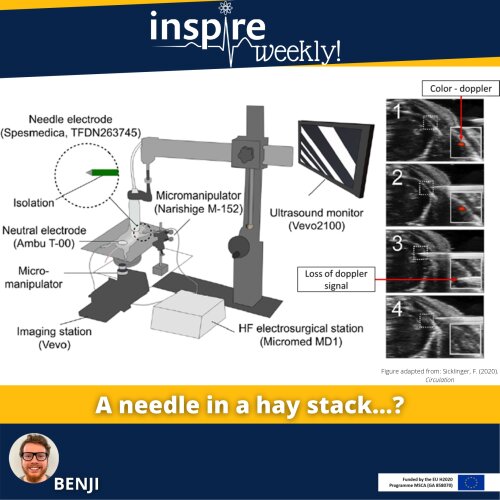21/07/2021 - Benji (ESR #13)

Myocardial infarction (MI) is a common cause of heart failure (HF). Therefore, induction of an MI is often used to study the resulting HF in mice. To induce MI in mice, several surgical methods have been developed over the past decades. Surgical ligation of the left anterior descending coronary artery (LAD) is the most commonly used method. Sicklinger et al. recently published a new method, which employs a cardiac ultrasound for LAD localization and a coagulator to induce a MI.
The method of Sicklinkger et al. uses a high frequency (HF) electrical impulse to coagulate the LAD. To this end, a micromanipulator-controlled needle is inserted into the chest and navigated to the LAD under ultrasound guidance. This new technique allows real-time assessment of cardiac function, infarct size and improves stratification post-procedure. In addition, the duration of the procedure is reduced from 20–30 minutes to 6–8 minutes and, importantly, the procedure is minimally invasive and improves recovery of the mice.
During my PhD, we will set-up and use this method in our lab to induce HF in a colon cancer mice model previously shown to have enhanced cancer growth in the presence of HF. Next, we will study the role of endothelial-derived growth factors as a potential integrator of the pathophysiology of HF and cancer.